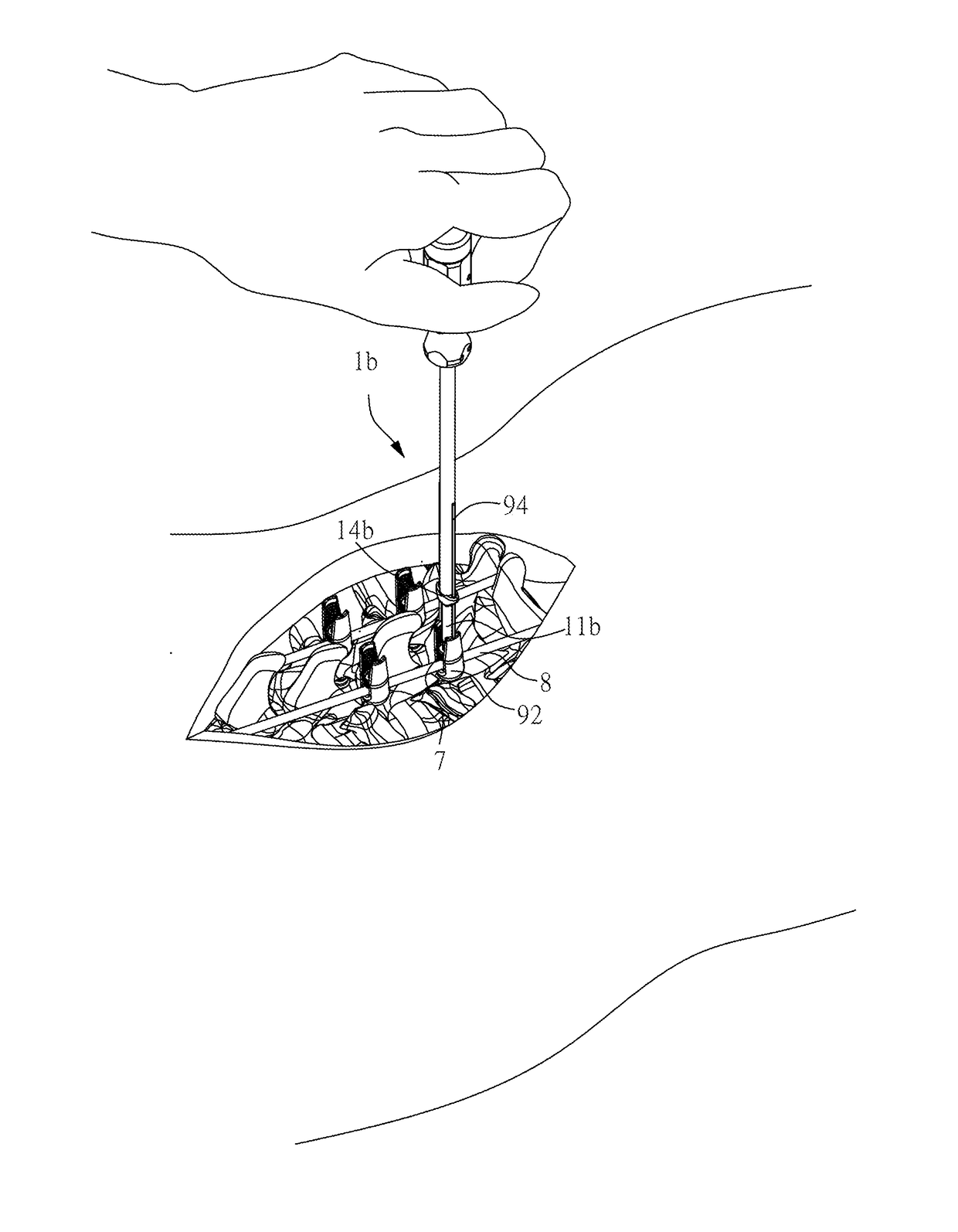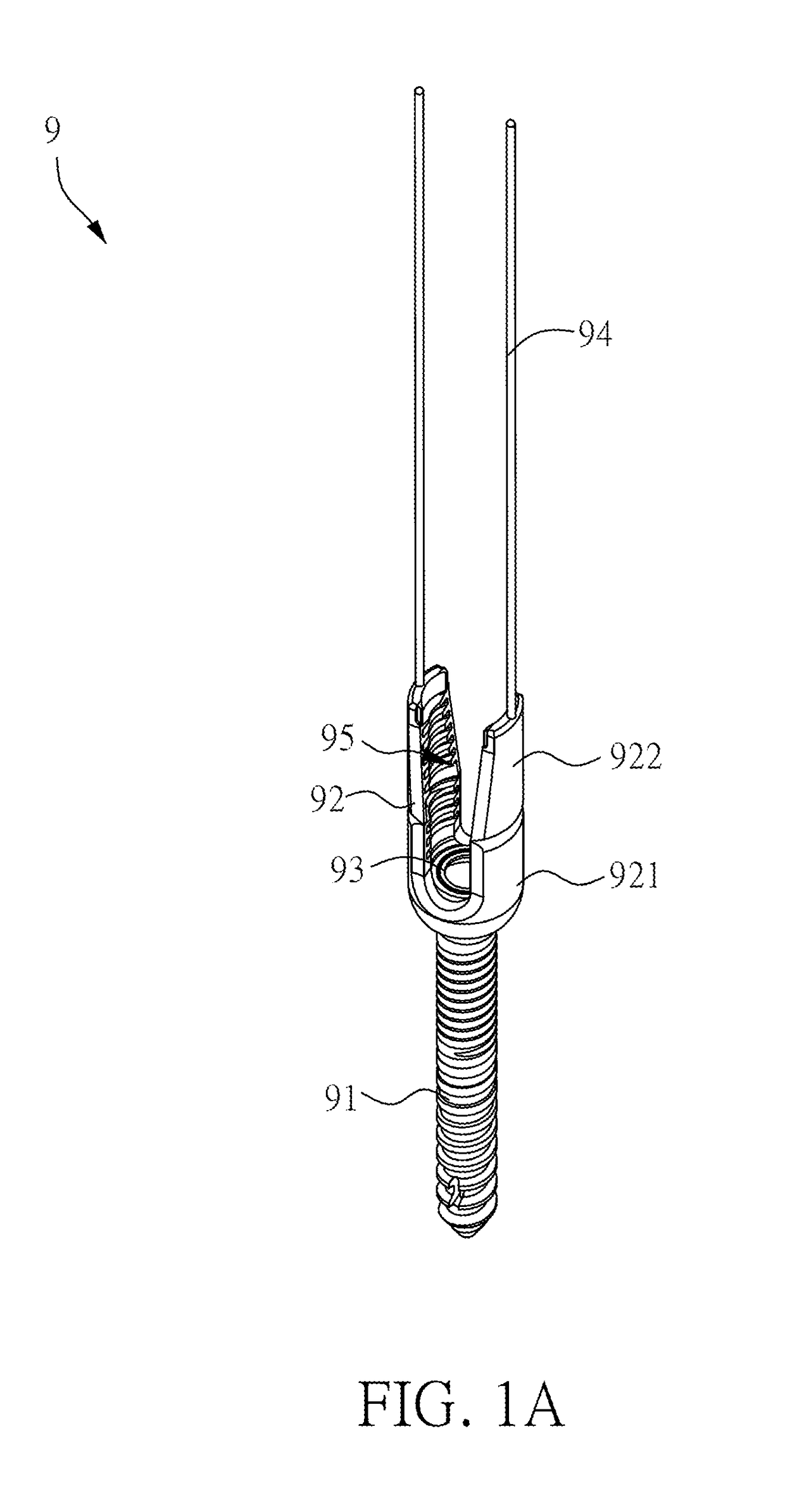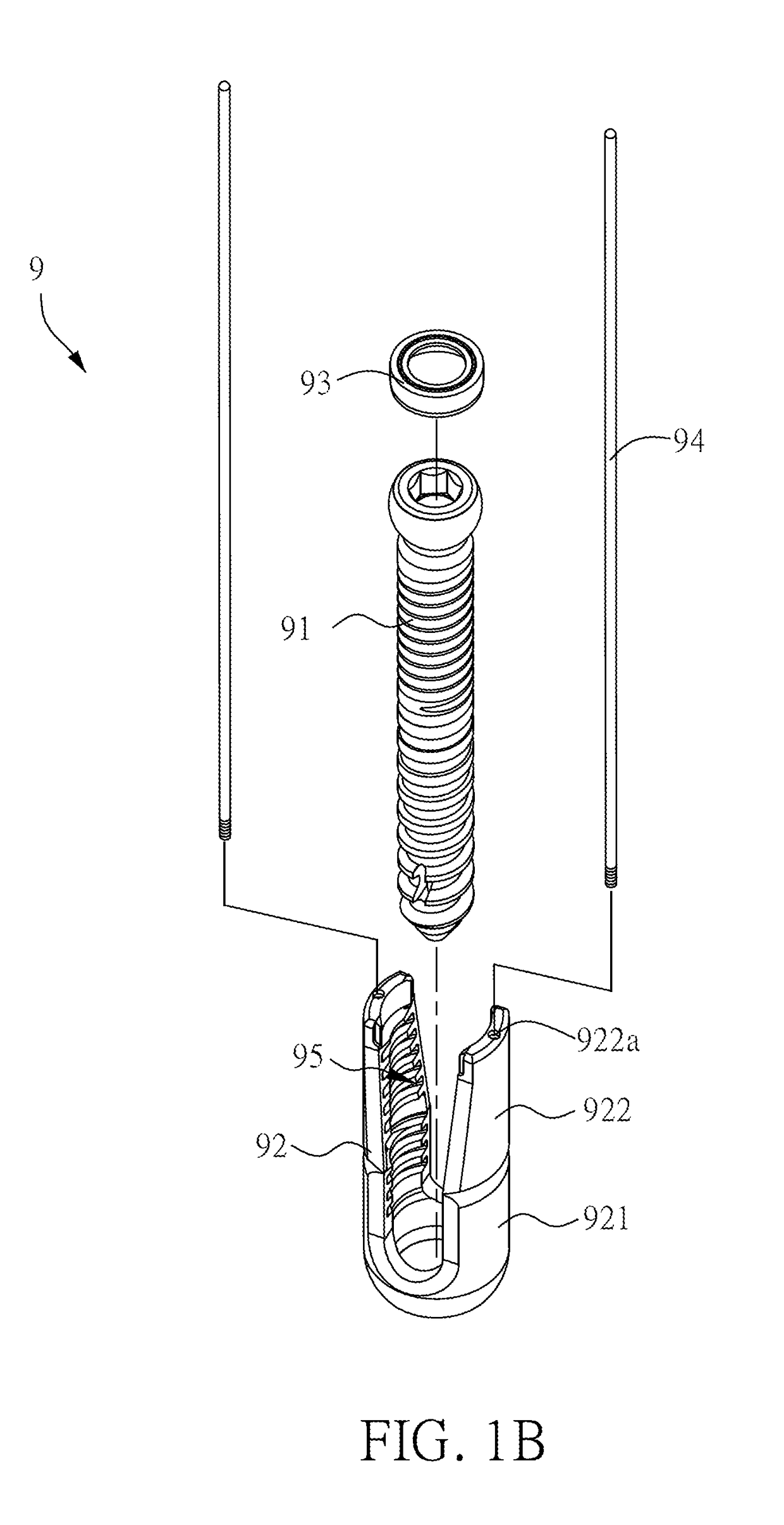Spinal surgical instrument, method of guiding thereof and system for bone stabilization
a surgical instrument and spine technology, applied in the field of spine surgical instruments, can solve the problems of pain, numbness, weakness, incontinence, etc., and achieve the effects of reducing the influence of adverse effects, improving the success rate of surgery, and efficient and effective approach to precedent devices
- Summary
- Abstract
- Description
- Claims
- Application Information
AI Technical Summary
Benefits of technology
Problems solved by technology
Method used
Image
Examples
first embodiment
[0060]FIG. 2 is a schematic diagram of a spinal surgical instrument according to the present invention. As shown in FIG. 2, in the present embodiment, the spinal surgical instrument 1 is a pedicle screw adjuster. The spinal surgical instrument 1 includes an operating element 11, an extending element 12, a handling element 13, and a guide element 14. One end of the extending element 12 connects to the operating element 11, and the opposite end thereof connects to the handling element 13. That is, the opposite ends of the extending element 12 are the operating element 11 and the handling element 13, respectively. The operating element 11 has different configurations corresponding to functional requirements to provide the variety of functions actually required during spinal surgery. The pedicle screw adjuster in the present embodiment is used as an example; the configuration of the operating element 11 fits the accommodating space 95 of the receiver 92 and can be engaged in the receive...
fourth embodiment
[0077]FIG. 7 is a schematic diagram of a spinal surgical instrument according to the present invention. Please refer to all of FIGS. 1A, 1D, 1E and FIG. 7. The spinal surgical instrument 1c in the present embodiment is an anti-torque wrench, which includes an operating element 11c, an extending element 12c, a handling element 13c, and a guide element 14c. The two ends of the extending element 12c connect with the operating element 11c and the handling element 13c, respectively. The guide element 14c is disposed at the extending element 12c. In view of the function of the anti-torque wrench, the structure of the operating element 11c, extending element 12c, and guide element differs slightly from the preceding embodiment.
[0078]The bottom of the operating element 11c has a plurality of pins for securing the corresponding locking ends, such as the outside of the receiver 92, to counter the torque generated by the use of the pre-lock wrench to lock the locking screw 7 in the receiver 92...
third embodiment
[0080]The surgeon can make the guiding hole 141c of the guide element 14c pass along the guiding unit 94 such that the operating element 11c approaches and settles on the outside of the receiver 92. Then the surgeon uses the spinal surgical instrument 1b (the pre-lock wrench) in the third embodiment in conjunction with the locking screw 7. The operating element 11b and the locking screw 7 are guided into the receiver 92 together for screwing the locking screw 7 within the receiver 92. In one aspect, the surgeon can use one hand to clasp the spinal surgical instrument 1b (the pre-lock wrench) to fix the rod 8 by locking the locking screw 7 and, meanwhile, uses the other hand to manipulate the spinal surgical instrument 1c (the anti-torque wrench) to stabilize the receiver 92 for preventing rotation caused by the action of screwing locking screw 7.
[0081]FIG. 8 is a schematic diagram of a spinal surgical instrument according to a fifth embodiment of the present invention. Please refer ...
PUM
 Login to View More
Login to View More Abstract
Description
Claims
Application Information
 Login to View More
Login to View More - R&D
- Intellectual Property
- Life Sciences
- Materials
- Tech Scout
- Unparalleled Data Quality
- Higher Quality Content
- 60% Fewer Hallucinations
Browse by: Latest US Patents, China's latest patents, Technical Efficacy Thesaurus, Application Domain, Technology Topic, Popular Technical Reports.
© 2025 PatSnap. All rights reserved.Legal|Privacy policy|Modern Slavery Act Transparency Statement|Sitemap|About US| Contact US: help@patsnap.com



